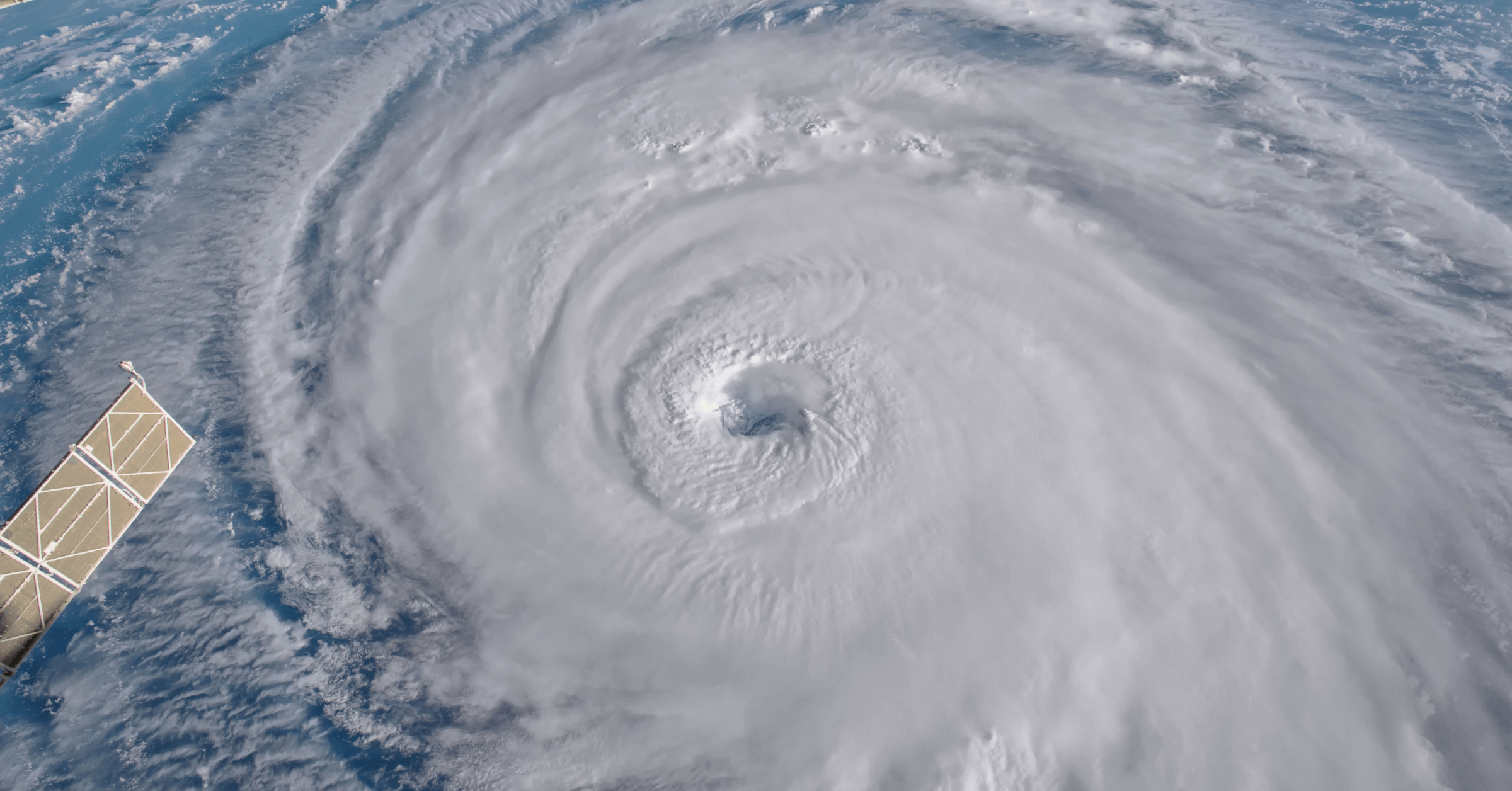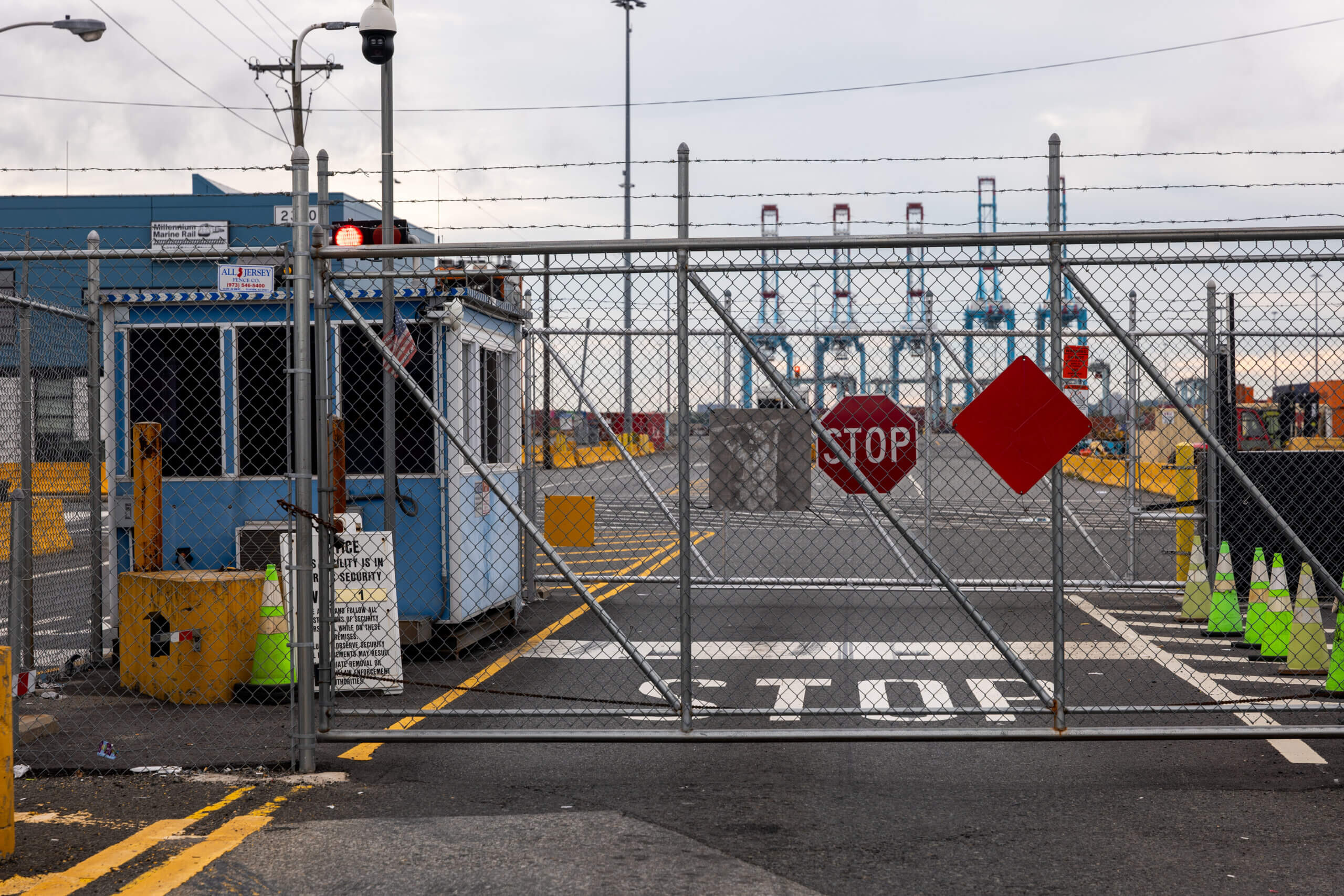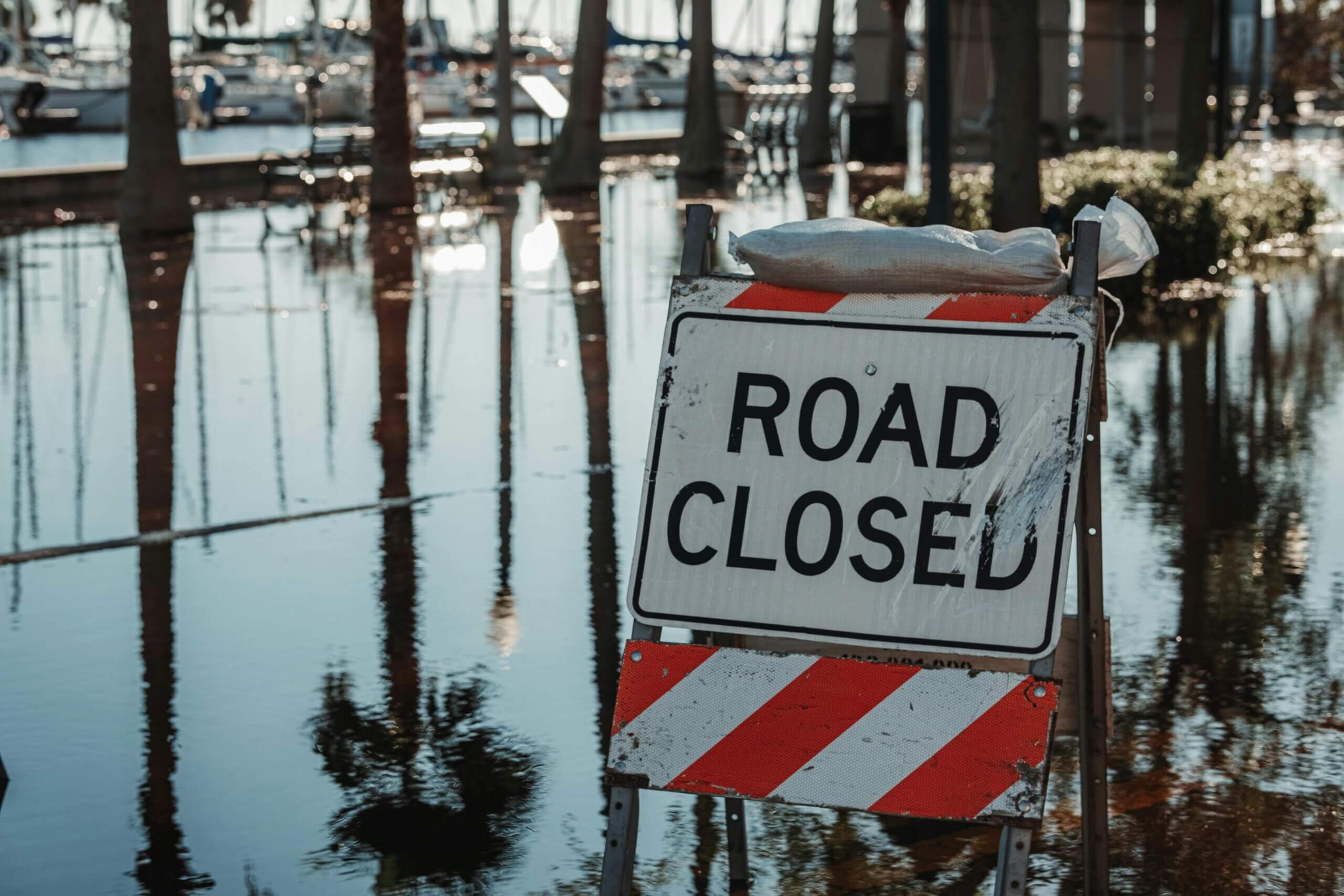Summary:
- Hurricane Milton made landfall as a Category 3 hurricane the evening of October 9, 2024, two weeks after Helene and just 5 days after the end of the ILA Port Strike. The three events caused major disruptions among supply chains.
- The inability for vessels to berth during the strike led to a temporary decrease in incoming vessels and an increase in the amount of vessels having to anchor near ports. Savannah and Norfolk continue to see higher than usual anchorage counts.
- Overall on-time performance for full truckload shipments in the U.S. dropped 2.5% in the wake of the hurricanes and strike, driven by the decrease in performance in the Southeast.
- Last mile on-time performance coming in and leaving Florida were heavily impacted by Hurricane Helene and Hurricane Milton. While they have recovered, they are still not back to pre-hurricane levels.
Overview
In October 2024, the East and Southeast U.S. were struck by a series of compounding crises that severely impacted the region. Within a short span, Hurricane Helene devastated the Southeast, the ILA port strike shut down ports along the East and Gulf Coasts for three days, and Hurricane Milton made landfall in Florida as a Category 3 storm. These consecutive disruptions hit an already fragile supply chain environment, amplifying delays and creating widespread challenges across all transportation modes. Events like these are difficult to predict and even harder to plan for, leading to cascading effects throughout the supply chain. For a deeper dive into how such catastrophes impact supply chains, tune into our webinar, From Hurricanes to Port Strikes: Supply Chain Resilience in the New Never Normal.
Ocean impacts
The East and Gulf Coasts were most affected by the recent strike and hurricanes, with both hurricanes making landfall in Florida and the ILA providing labor along both coasts. The chart below outlines the inbound container vessels by coast in recent weeks.
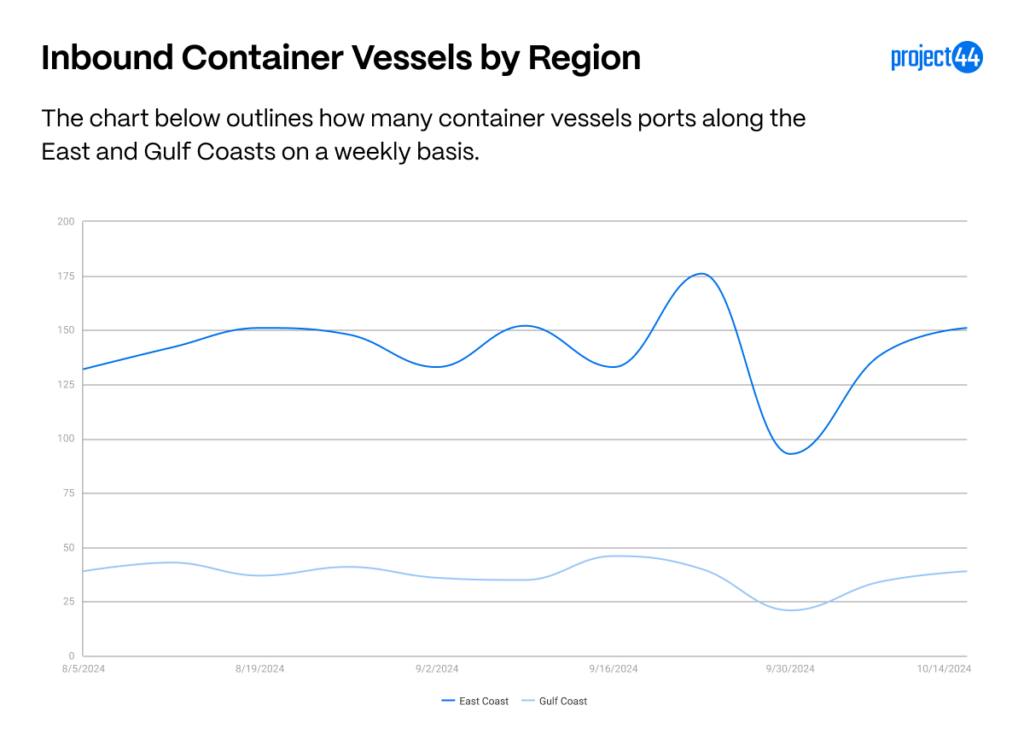
The week starting on September 30th marked the lowest number of inbound container vessels for both coasts, with the Gulf Coast falling 48% and the East Coast falling 47%. Despite the East Coast also battling hurricanes, vessel traffic on both coasts recovered quickly after the strike, which lasted from October 1st through October 3rd.
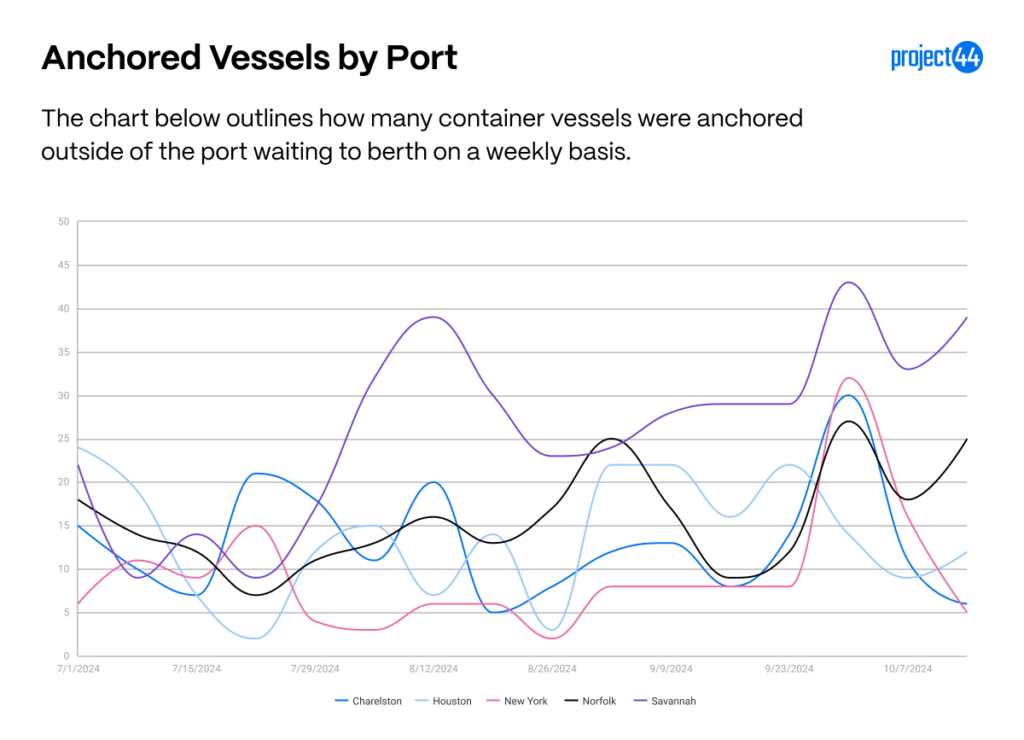
Despite the quick recovery in inbound container vessel numbers, there was still a significant number of vessels anchored outside major ports. This indicates a backlog and congestion within the ports causing delays, which peaked during the same week as the strike but has since improved. However, the ports of Savannah and Norfolk are still experiencing a higher-than-usual number of vessels at anchor.
Notably, the Port of Houston did not see a similar increase in anchored container vessels, likely due to the large volume of tanker vessels it handles because of its proximity to oil refineries.
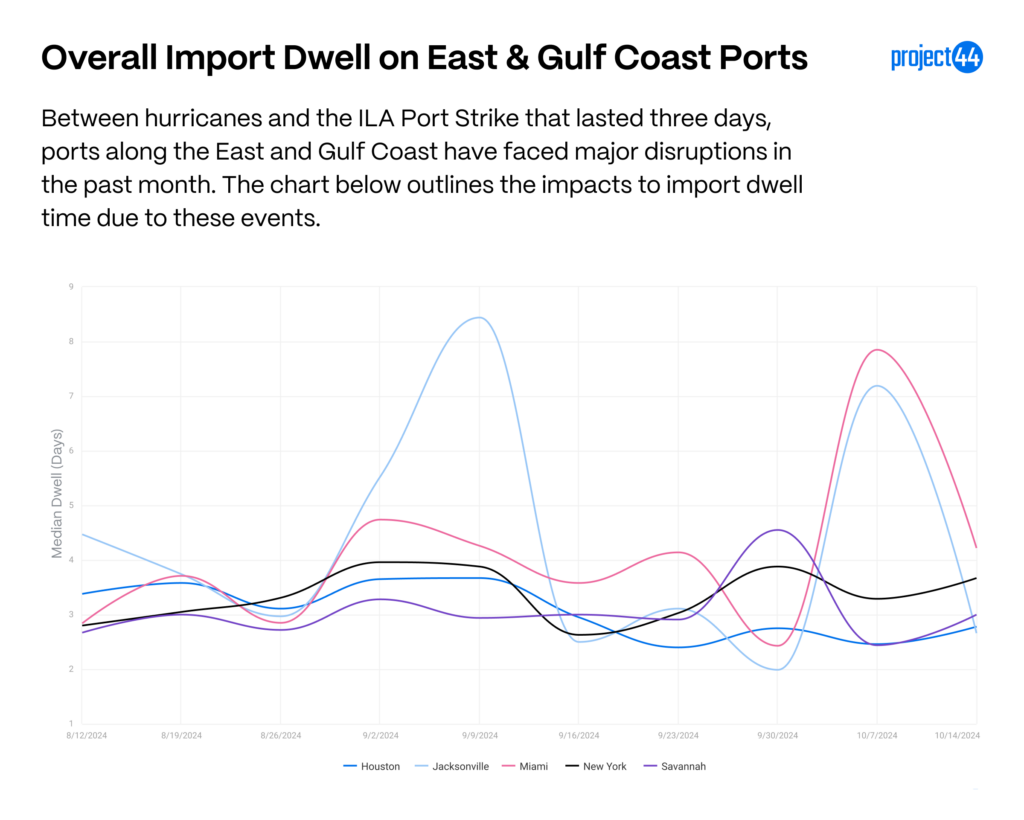
As anticipated with the strike and hurricanes, dwell times were impacted. Import dwell times at ports less affected by the hurricanes peaked during the week of September 30th due to containers sitting untouched for three days during the strike. In Jacksonville, there was a spike during the week of September 9th due to Hurricane Francine, followed by another spike after Hurricane Helene made landfall on the 26th. Before Florida had a chance to recover, Milton made landfall, leading to delays of 7-8 days for import containers. Dwell times returned to more typical levels the week of September 14th after a 250% increase.
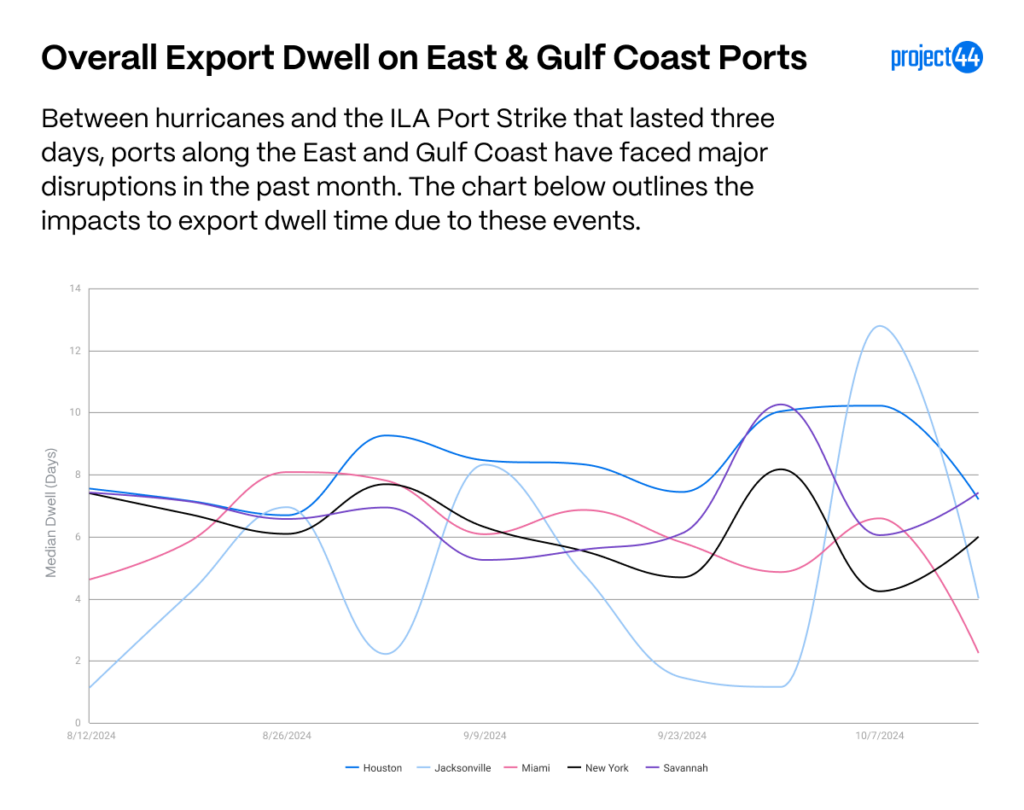
Overall, export container dwell times were less affected by the hurricanes and strikes than import dwell times, but there were still disruptions. Jacksonville saw a median dwell time of 13 days during the week of October 7th, compared to a typical range of 1-8 days. New York and Savannah also experienced spikes during the week of September 30th, but ports have since returned to normal export dwell levels.
Truckload impacts
Truckload shipments are vulnerable to delays from hurricane-related roadblocks and flooding, especially with the major floods caused by back-to-back hurricanes.
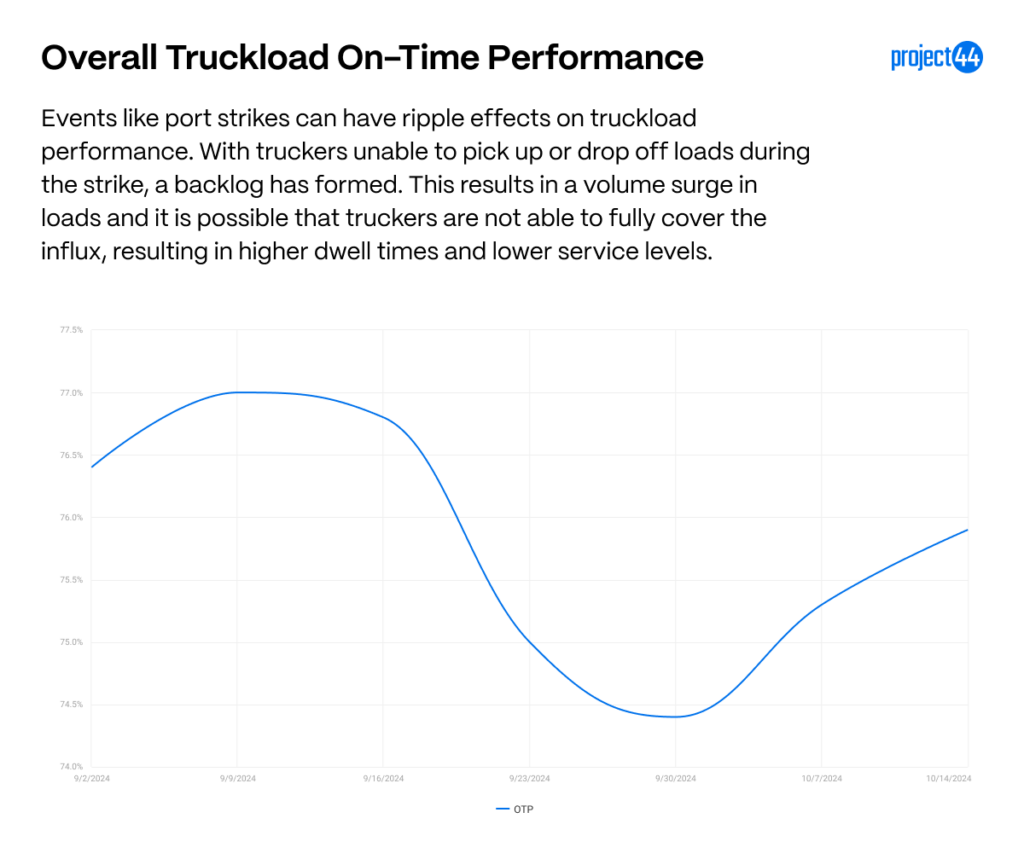
Overall full truckload on-time performance throughout the United States dropped by 2.5% between the weeks Helene and Milton made landfall. The chart below shows how regions compare to overall performance.
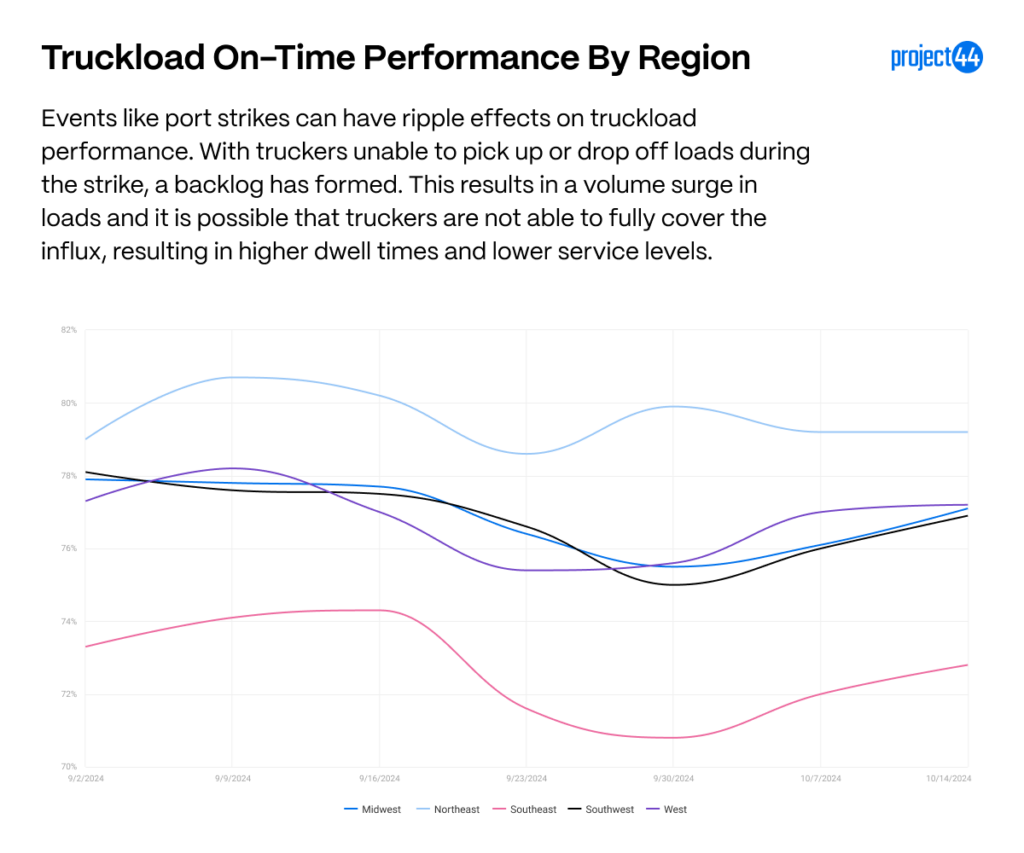
As the chart illustrates, the Southeast is operating substantially lower than the rest of the country, even as of last week. The combination of flooding, hurricane damage, and increased demand at ports after the strike ended has led to longer lines and waiting times. This region has not yet recovered and is performing up to 6% lower than other parts of the country.
Last mile impacts
Florida faced significant impacts in the last-mile delivery industry as roads became difficult to navigate and workers evacuated for safety. The chart below shows the daily on-time performance for shipments inbound to and outbound from Florida compared to overall last-mile on-time performance.
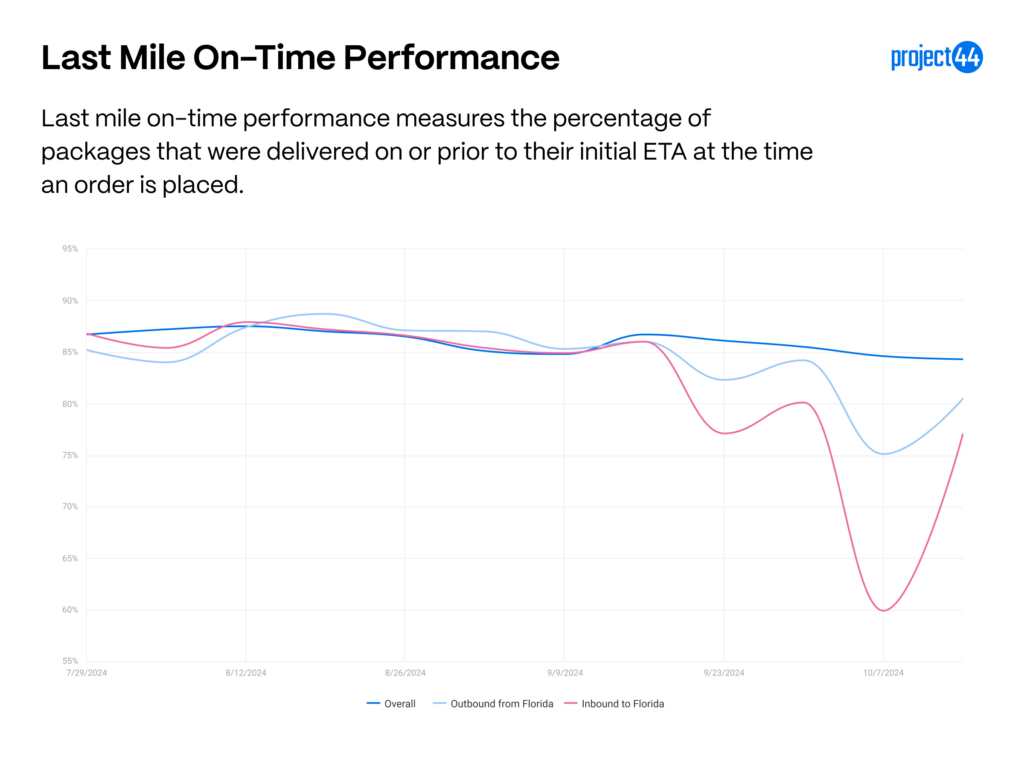
Shipments inbound to Florida were most affected, likely due to infrastructure damage, labor shortages, and reduced capacity in the market as high-priority aid shipments took precedence. At its worst-performing week, two out of every five shipments were delivered late, and performance was trending 24% lower than the overall market.
Outbound shipments also underperformed, lagging around 10% behind the overall market. They were impacted by many of the same issues as inbound shipments, but power outages also contributed to delays in order fulfillment.
While both inbound and outbound shipments for Florida have improved, they still lag behind the overall market trend.
Summary
In summary, Hurricane Milton exacerbated existing supply chain vulnerabilities in the wake of Hurricane Helene and the ILA port strike, leading to widespread delays across ocean freight, truckload shipments, and last-mile deliveries. While inbound container vessel traffic recovered quickly after the strike, port congestion, especially in Savannah and Norfolk, continues to cause delays. Truckload shipments in the Southeast remain particularly impacted, with on-time performance significantly lower than in other regions. Florida’s last-mile deliveries have also faced severe disruptions, but service levels are gradually improving. Overall, the compounding effects of these crises highlight the ongoing challenges in maintaining supply chain resilience in the face of disruptions, including natural disasters and labor disputes.

